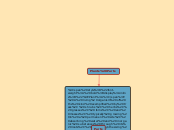Plants Parts
Plant: A living organism of the kind exemplified by trees, shrubs, herbs, grasses, ferns, and mosses, typically growing in a permanent site, absorbing water and inorganic substances through its roots, and synthesizing nutrients in its leaves by photosynthesis using the green pigment chlorophyll.
Parts
Stem
SubtemStems do many things. They support the plant. They act like the plant's plumbing system, conducting water and nutrients from the roots and food in the form of glucose from the leaves to other plant parts. Stems can be herbaceous like the bendable stem of a daisy or woody like the trunk of an oak tree.
Leaves
Most plants' food is made in their leaves. Leaves are designed to capture sunlight which the plant uses to make food through a process called photosynthesis.
Fruits
Fruit provides a covering for seeds. Fruit can be fleshy like an apple or hard like a nut.
Seeds
Seeds contain new plants. Seeds form in fruit.
Flowers
Flowers are the reproductive part of most plants. Flowers contain pollen and tiny eggs called ovules. After pollination of the flower and fertilization of the ovule, the ovule develops into a fruit.
Roots
Roots act like straws absorbing water and minerals from the soil. Tiny root hairs stick out of the root, helping in the absorption. Roots help to anchor the plant in the soil so it does not fall over. Roots also store extra food for future use.
